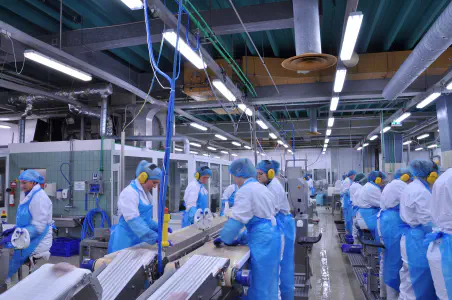In the realm of businesses that depend on temperature-controlled environments, the
significance of cold storage doors cannot be overstated. Serving as the critical barrier between the carefully
managed internal climate and the variable conditions of the external world, cold storage doors are pivotal to
maintaining product integrity, optimizing energy efficiency, and ensuring operational effectiveness. This article
explores the nuances of cold storage doors and how they serve as an essential asset in the preservation, food
service, and pharmaceutical industries, among others.
Cold Storage Doors: Ensuring Optimal Preservation
At the heart of every cold storage facility lies the goal to preserve the quality and
extend the shelf life of temperature-sensitive goods. This preservation is achieved through a combination of
advanced refrigeration techniques and the implementation of high-quality cold storage doors. These specialized doors
are designed to withstand the rigorous demands of constant operation while minimizing temperature fluctuations that
could lead to spoilage or waste.
Types and Design: Tailored Solutions for Every Business
Cold storage doors come in a range of types to match the varied requirements of different
businesses. Here are the most common designs:
Sliding Cold Storage Doors: Ideal for large openings and heavy traffic, sliding doors
provide wide access points and effectively seal large areas without impeding vehicle or forklift movement.
Swing Doors: Common in walk-in coolers and freezers, swing doors are suitable for smaller
openings and lower traffic volumes, offering convenience and ease of use.
Overhead Sectional Doors: These doors are often used in areas where space is at a premium,
retracting vertically to conserve space while maintaining a tight seal.
Air Curtains: As an addition or alternative to physical doors, air curtains create an air
barrier, keeping cold air inside while allowing easy movement of goods and personnel.
Each type of cold storage door can be tailored with additional features to suit specific
operational needs, such as transparency for visibility, impact-resistant panels for durability, or automation for
hands-free operation.
Energy Efficiency: The Core Attribute of Cold Storage Doors
Energy efficiency remains a primary concern for any business involved in cold storage. The
doors play a significant role in reducing energy consumption by providing excellent insulation and an airtight seal
that isolates the cold environment from warmer external temperatures. State-of-the-art cold storage doors are often
equipped with advanced gaskets, insulated cores, and thermal breaks to minimize heat transfer and prevent the
infiltration of outside air, thus maintaining the internal climate with less energy expenditure.
Technology Advancements: Automation and Safety Features
Technological advancements have revolutionized the design and functionality of cold storage
doors. Automated door systems have emerged, offering rapid opening and closing cycles that reduce air exchange,
thereby improving energy efficiency and reducing cooling costs. Safety features also abound, including emergency
release mechanisms, motion sensors, and warning systems to protect both personnel and products from door-related
accidents or system malfunctions.
Durability and Maintenance: Prolonging the Life of Cold Storage Doors
Cold storage doors must endure extreme conditions while maintaining their structural
integrity and insulative properties. Materials such as stainless steel or high-impact composites are commonly used
for their resilient and hygienic qualities. Regular maintenance is critical to ensure that these doors continue to
perform at their peak, with inspections focusing on seals, hinges, and automated components to prevent breakdowns
and costly service interruptions.
Customization: Aligning Functional Requirements with Aesthetic Preferences
While the performance of cold storage doors is paramount, aesthetics and compliance with
facility design standards are also important. Many manufacturers offer customization options that enable businesses
to choose colors, finishes, and design features that align with their branding or regulatory requirements.
Compliance with Regulations and Standards
Businesses must navigate a complex web of regulations concerning food safety, energy
conservation, and building codes. Quality cold storage doors are engineered to meet these rigorous standards,
ensuring that businesses stay compliant with industry-specific guidelines such as the FDA, USDA, and international
energy conservation codes.
The Financial and Operational Benefits of Upgrading Cold Storage Doors
Investing in modern cold storage doors can yield significant financial returns through
energy savings, reduced product loss, and lower maintenance costs. Upgrading to newer, more efficient models can
also streamline workflows, increase operational safety, and contribute to a more sustainable business practice that
aligns with modern environmental considerations.
Cold storage doors are more than mere entrances and exits to storage areas; they are
integral components that contribute to the lifeblood of any temperature-sensitive operation. Selecting the right
doors involves a careful evaluation of energy efficiency, technological integrations, and long-term durability. By
prioritizing these aspects, businesses can ensure the stability of their products, excellence in their operations,
and responsibility in their energy consumption. As the demands on cold storage facilities continue to grow in
complexity and scale, the doors that protect these critical environments will undoubtedly remain an essential
feature, evolving with advancements in technology and materials to meet the expanding needs of businesses worldwide.
Industrial Door Company can provide you with expert level advice for all of your Cold Storage Door needs. Reach out
today!

